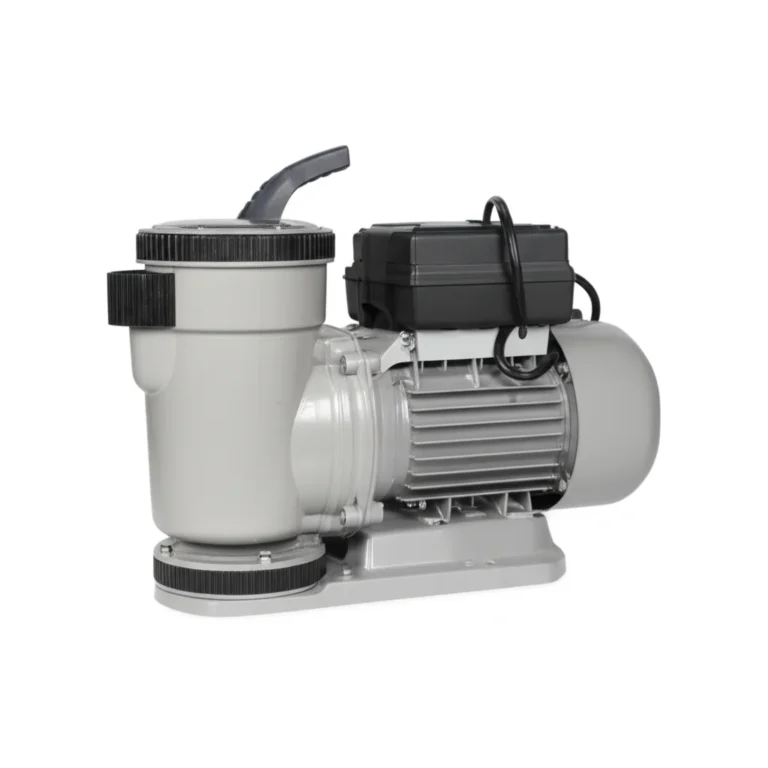Support our educational content for free when you purchase through links on our site. Learn more
Are Bigger Ceiling Fans Quieter? 10 Surprising Truths You Need to Know! 🌬️ (2025)
Have you ever sat under a ceiling fan, hoping for a cool, silent breeze, only to be distracted by an annoying hum or rattle? You’re not alone! Many of us wonder: does bigger really mean quieter when it comes to ceiling fans? Spoiler alert — the answer isn’t as simple as you might think. From whisper-quiet giants spinning slowly to smaller fans packing unexpected silence, this article uncovers the secrets behind fan noise, airflow, and design.
Did you know that some of the largest ceiling fans on the market operate at noise levels as low as 39 decibels — quieter than a library? But size isn’t the whole story. We’ll explore the science of silence, debunk common myths, and reveal the top quiet fans that combine size, style, and smart tech to keep your space cool without the buzz. Ready to find your perfect silent breeze? Let’s dive in!
Key Takeaways
- Larger ceiling fans generally run quieter because they move more air at slower speeds, reducing blade noise and motor hum.
- Motor type and blade design are just as crucial as size; direct-drive brushless motors and airfoil blades dramatically cut noise.
- Proper installation and maintenance are essential to prevent rattling and vibration.
- Top quiet fan picks include the Big Ass Fans Haiku, MacroAir AVDX, and Hunter Symphony — each offering unique blends of size, silence, and smart features.
- Investing in a premium quiet fan pays off with energy savings, comfort, and long-term durability.
👉 Shop the quietest ceiling fans here:
- Big Ass Fans Haiku: Amazon | Official Site
- MacroAir AVDX HVLS Fans: Amazon | Official Site
- Hunter Symphony Smart Fan: Amazon | Official Site
Table of Contents
- ⚡️ Quick Tips and Facts: Your Instant Guide to Quiet Ceiling Fans
- 🌬️ The Evolution of Airflow: A Brief History of Ceiling Fan Design & Noise
- 📏 The Great Fan Debate: Are Bigger Ceiling Fans Really Quieter? Let’s Settle This!
- 🤫 The Science of Silence: Unpacking How Ceiling Fans Generate Airflow (and Noise!)
- 💨 The Gentle Giant Principle: Why Larger Blades Often Mean Less Noise
- ⚙️ Beyond Size: The Hidden Mechanics That Dictate Your Fan’s Decibel Level
- 🚧 When Size Doesn’t Guarantee Silence: Exceptions and Surprises!
- 👂 What Truly Makes a Ceiling Fan Quiet? Our Comprehensive Checklist!
- 📊 Deciphering the Decibels: How to Read Fan Noise Ratings Like a Pro
- 🏆 Our Top Picks for Whisper-Quiet Ceiling Fans: Size, Style, and Serenity
- 🛠️ Installation & TLC: Keeping Your Ceiling Fan Serenely Silent
- 🔍 Troubleshooting a Noisy Fan: Your DIY Guide to Restoring Peace
- 💡 Smart Solutions for Silent Spaces: Tech That Tames the Hum
- 🎨 Style Meets Silence: Choosing a Fan That Looks as Good as It Sounds
- 🚫 Common Ceiling Fan Noise Myths, Busted by the Pros!
- 💰 The Price of Peace: Is Investing in a Quieter Fan Worth Every Penny?
- ✨ Conclusion: The Quest for Quiet Airflow Continues!
- 🔗 Recommended Links: Dive Deeper into Quiet Comfort
- ❓ FAQ: Your Most Pressing Questions About Quiet Ceiling Fans, Answered!
- 📚 Reference Links: Our Sources for Serene Insights
Quick Tips and Facts: Your Instant Guide to Quiet Ceiling Fans
Welcome to the world of ceiling fans, where size, design, and technology collide to create the perfect breeze — without the buzz! Wondering if bigger ceiling fans are quieter? Here’s a quick cheat sheet from the audio engineers and reviewers at Quietest™:
- ✅ Bigger blades move more air at slower speeds, which generally means less noise.
- ❌ But size alone doesn’t guarantee silence; motor type, blade design, and installation matter just as much.
- ✅ HVLS (High Volume Low Speed) fans are engineered for quiet, efficient airflow.
- ✅ Direct-drive motors reduce mechanical noise compared to gear-driven fans.
- ✅ Proper installation and maintenance are key to keeping noise levels low.
- ✅ Noise levels for large fans typically range 39-61 dB, while smaller fans can hit up to 80 dB.
- ✅ Materials like extruded aluminum blades resist warping and reduce motor strain, contributing to quieter operation.
For more on how to pick the perfect fan for your silent sanctuary, keep reading! We’ll unpack the science, the myths, and the best models to keep your space cool and quiet. Meanwhile, check out our Noise Reduction Tips for more ways to hush your home.
The Evolution of Airflow: A Brief History of Ceiling Fan Design & Noise

From Whirring Wonders to Whisper-Quiet Giants
Ceiling fans have come a long way since their humble beginnings in the late 19th century. Early models were noisy contraptions with wooden blades and clunky motors — imagine a buzzing bee trapped in your living room! Over decades, innovations in blade shape, motor technology, and materials have transformed fans into sleek, silent air-movers.
- Early fans: Wooden blades, belt-driven motors, noisy operation.
- Mid-20th century: Introduction of electric motors, metal blades, and speed controls.
- Modern era: Aerodynamic airfoil blades inspired by aviation, direct-drive motors, and smart sensors.
Today’s HVLS fans (High Volume Low Speed) are the pinnacle of this evolution, designed to move massive amounts of air quietly by spinning large blades slowly. This approach contrasts sharply with older fans that relied on high RPMs and smaller blades, which created more noise.
For a deep dive into fan history and tech, check out this Smithsonian article and our own Quiet Home Appliances reviews.
The Great Fan Debate: Are Bigger Ceiling Fans Really Quieter? Let’s Settle This!
Here’s the million-dollar question: Does bigger mean quieter? The short answer: usually, yes — but with important caveats.
Why Bigger Fans Tend to Be Quieter
- Slower blade speed: Larger fans spin slower to move the same amount of air, reducing blade noise and motor hum.
- More efficient airflow: Big blades with airfoil shapes create smooth, laminar airflow instead of turbulent gusts.
- Less motor strain: Larger blades distribute workload better, reducing mechanical noise.
But Size Isn’t Everything
- Poorly balanced blades or cheap motors can make any fan noisy.
- Gear-driven fans often produce more noise than direct-drive models, regardless of size.
- Installation errors (like loose mounts) can cause annoying rattles.
What the Experts Say
MacroAir, pioneers of HVLS fans, state that “bigger is just better” for quiet, efficient cooling. Their fans range from 8 to 24 feet in diameter and operate at noise levels as low as 39 dB — quieter than a typical library.
On the flip side, some smaller fans with advanced motor tech and blade design can outperform larger but cheaply made fans in noise reduction.
So, bigger fans generally win the quietness battle, but only if built and installed right.
The Science of Silence: Unpacking How Ceiling Fans Generate Airflow (and Noise!)
What Makes a Fan Hum or Whirr?
Noise from ceiling fans comes from several sources:
- Motor noise: Electrical hum or mechanical sounds from gears and bearings.
- Blade noise: Air turbulence caused by blade shape, speed, and balance.
- Vibration: Loose parts or poor mounting causing rattles.
How Airflow Affects Sound
Fans create airflow by pushing air with rotating blades. The faster the blades spin, the more turbulent the air — and the louder the noise. Larger blades can move the same volume of air at slower speeds, producing smoother airflow and less noise.
Airfoil Blade Design: The Quiet Game-Changer
Modern fans use airfoil-shaped blades (think airplane wings) that generate more lift and less drag. This design reduces the “whoosh” sound and improves efficiency.
Motor Types and Noise
- Direct-drive motors: Use magnets to spin the blades without gears, resulting in quieter operation and less maintenance.
- Gear-driven motors: Use mechanical gears that can create noise and require lubrication.
For a technical breakdown, see MacroAir’s motor technology page.
The Gentle Giant Principle: Why Larger Blades Often Mean Less Noise
Imagine a gentle giant waving its arms slowly versus a sprinter flailing wildly — which do you think makes less noise? That’s the essence of why bigger fans tend to be quieter.
Key Points:
- Lower RPMs: Larger blades spin slower, reducing the frequency and intensity of sound waves.
- Increased blade surface: More air moved per rotation means less need for speed.
- Reduced turbulence: Bigger blades with airfoil shapes create smooth airflow, minimizing “choppy” sounds.
Real-World Example: MacroAir AVDX Fan
| Feature | Detail |
|---|---|
| Diameter | 8 to 24 feet |
| Noise Level | 39 to 45 dB |
| Airflow Coverage | Up to 22,000 sq ft |
| Motor Type | Direct-drive, brushless motor |
| Energy Efficiency | $0.16 per hour running cost |
This fan’s slow, powerful rotation moves air quietly over huge spaces — perfect for warehouses, gyms, or large living rooms.
Beyond Size: The Hidden Mechanics That Dictate Your Fan’s Decibel Level
Size is just one piece of the puzzle. Here’s what else influences how quiet your ceiling fan really is:
1. Motor Quality and Type
- Brushless DC motors (BLDC): Ultra-quiet, energy-efficient, and long-lasting.
- Gearbox presence: Gears add noise and maintenance needs.
- Motor mounting: Rubber mounts can reduce vibration noise.
2. Blade Material and Balance
- Extruded aluminum blades: Lightweight, corrosion-resistant, warp-free.
- Moso bamboo blades: Natural, lightweight, and quiet (e.g., Big Ass Fans Haiku).
- Precision balancing: Prevents wobble and rattling.
3. Installation and Mounting
- Secure mounting reduces vibration.
- Proper blade pitch and angle optimize airflow and reduce noise.
- Ceiling height and fan placement affect sound perception.
4. Additional Features
- Smart sensors: Adjust speed based on room temperature and occupancy (e.g., Haiku’s SenseME™).
- Variable speed controls: Allow fine-tuning for quiet operation.
When Size Doesn’t Guarantee Silence: Exceptions and Surprises!
Not all big fans are quiet, and some smaller fans can surprise you with their silence. Here’s why:
- Cheap materials: Low-quality blades or motors can create rattles and hums regardless of size.
- Gear-driven fans: Even large fans with gearboxes can be noisy.
- Poor maintenance: Dust buildup and loose screws cause noise.
- Improper installation: Misaligned blades or loose mounts amplify sound.
Anecdote from Our Team
One of our reviewers installed a large 60-inch fan in their living room expecting peace and quiet. Instead, it produced a persistent hum due to an unbalanced blade and a noisy gear motor. After switching to a Big Ass Fans Haiku with direct-drive motor and bamboo blades, the noise dropped dramatically — proving that quality beats size alone.
What Truly Makes a Ceiling Fan Quiet? Our Comprehensive Checklist!
Here’s your ultimate checklist to ensure your fan whispers instead of roars:
| Factor | What to Look For | Why It Matters |
|---|---|---|
| Blade Size | Larger blades (52”+) | Moves more air at slower speeds |
| Blade Material | Extruded aluminum or bamboo | Lightweight, balanced, durable |
| Motor Type | Brushless DC or direct-drive | Less mechanical noise |
| Blade Design | Airfoil shape | Smooth airflow, less turbulence |
| Installation | Professional mounting, balanced blades | Prevents vibration and rattling |
| Speed Settings | Multiple speeds + smart sensors | Adjust noise and airflow |
| Maintenance | Easy cleaning and lubrication | Keeps noise low over time |
Want to explore more quiet appliances? Check out our Quiet Home Appliances section for inspiration.
Deciphering the Decibels: How to Read Fan Noise Ratings Like a Pro
Understanding dB Levels
- 0 dB: Threshold of human hearing (silence)
- 30-40 dB: Quiet library, whisper
- 50-60 dB: Normal conversation, moderate fan noise
- 80+ dB: Loud fan, comparable to city traffic
Typical Ceiling Fan Noise Ranges
| Fan Type | Noise Level (dB) | Notes |
|---|---|---|
| Small, high-speed fans | 60-80 dB | Can be distracting or annoying |
| Large HVLS fans | 39-61 dB | Quiet, suitable for large spaces |
| Big Ass Fans Haiku | ~35-45 dB | Among the quietest residential fans |
Tips for Comparing Noise Ratings
- Look for manufacturer’s noise specs in product manuals or websites.
- Beware of marketing claims — check independent reviews.
- Consider your room size and ambient noise; a 50 dB fan may be quiet in a noisy room but noticeable in a silent bedroom.
Our Top Picks for Whisper-Quiet Ceiling Fans: Size, Style, and Serenity
1. Big Ass Fans Haiku Indoor Ceiling Fan
| Aspect | Rating (1-10) |
|---|---|
| Design | 9 |
| Noise Level | 9 |
| Functionality | 10 |
| Smart Features | 10 |
| Energy Efficiency | 9 |
Why we love it:
- Virtually silent direct-drive motor with IPX2 rating.
- Bamboo or aircraft-grade aluminum blades with airfoil design.
- SenseME™ sensors adjust speed automatically.
- Wi-Fi and smart home integration (Apple HomeKit, Alexa, Google).
- Multiple speed settings including Sleep and Whoosh modes.
- Elegant LED lighting with adjustable brightness.
Drawbacks:
- Premium price point.
- Requires professional installation for best results.
👉 CHECK PRICE on:
2. MacroAir AVDX HVLS Fan
| Aspect | Rating (1-10) |
|---|---|
| Design | 8 |
| Noise Level | 8 |
| Functionality | 9 |
| Energy Efficiency | 10 |
| Durability | 9 |
Why we love it:
- Huge diameter options (8-24 ft) for massive spaces.
- Direct-drive brushless motor for quiet, efficient airflow.
- Covers up to 22,000 sq ft.
- Corrosion-resistant extruded aluminum blades.
- Low running cost (~$0.16/hour).
Drawbacks:
- Overkill for small residential rooms.
- Professional installation required.
👉 Shop MacroAir fans on:
3. Hunter Symphony Smart Ceiling Fan
| Aspect | Rating (1-10) |
|---|---|
| Design | 8 |
| Noise Level | 8 |
| Functionality | 8 |
| Smart Features | 8 |
| Price-Value | 9 |
Why we love it:
- Whisper-quiet DC motor.
- Smart control via app, Alexa, Google Assistant.
- Sleek modern design with reversible blades.
- Affordable compared to premium brands.
Drawbacks:
- Smaller blade size (52 inches).
- Not as silent as premium HVLS fans.
👉 CHECK PRICE on:
Installation & TLC: Keeping Your Ceiling Fan Serenely Silent
Step-by-Step Installation Tips
- Choose the right size for your room (larger rooms = bigger fans).
- Hire a professional installer or follow manufacturer instructions meticulously.
- Ensure blades are balanced using a balancing kit.
- Secure all mounts and screws tightly to prevent vibration.
- Check blade pitch and angle for optimal airflow.
- Use rubber or vibration dampeners on mounts if possible.
- Test fan at all speeds to detect any noise issues early.
Maintenance Tips for Long-Term Quiet
- Clean blades regularly to prevent dust buildup.
- Lubricate motor bearings if recommended.
- Tighten screws and check mounts periodically.
- Replace worn-out parts promptly.
For more maintenance hacks, visit our Noise Reduction Tips.
Troubleshooting a Noisy Fan: Your DIY Guide to Restoring Peace
If your fan suddenly sounds like a jet engine, don’t panic! Here’s how to diagnose and fix common noise culprits:
| Symptom | Possible Cause | Fix |
|---|---|---|
| Loud humming | Motor issues or electrical noise | Check wiring; consult electrician |
| Rattling or wobbling | Unbalanced blades or loose screws | Balance blades; tighten screws |
| Clicking or ticking | Debris or blade interference | Clean blades; inspect for damage |
| Squeaking or grinding | Lack of lubrication or worn bearings | Lubricate or replace bearings |
If DIY fails, professional servicing is your best bet to avoid voiding warranties.
Smart Solutions for Silent Spaces: Tech That Tames the Hum
Technology is your friend when it comes to quiet ceiling fans. Here are some smart features that help keep noise low:
- SenseME™ sensors (Big Ass Fans Haiku): Automatically adjust speed based on room temperature and motion.
- Variable speed controls: Fine-tune airflow and noise.
- Bluetooth and Wi-Fi controls: Manage fan settings remotely without fiddling with noisy switches.
- Sleep and Whoosh modes: Simulate natural breezes and reduce noise during rest.
Smart fans integrate seamlessly with home assistants like Alexa, Google Home, and Apple HomeKit, making quiet comfort effortless.
Style Meets Silence: Choosing a Fan That Looks as Good as It Sounds
Who says silence can’t be stylish? Here’s how to pick a fan that complements your décor while keeping noise down:
- Material matters: Bamboo blades (Haiku) add warmth and natural beauty.
- Finish options: Aircraft-grade aluminum offers sleek, modern looks.
- Blade count: Fewer blades with airfoil design can be more efficient and quieter.
- Lighting integration: Dimmable LEDs add ambiance without extra noise.
- Smart controls: Wireless remotes and wall controls reduce clunky switches.
Remember, a fan that fits your room’s style encourages you to use it more — and enjoy that peaceful breeze!
Common Ceiling Fan Noise Myths, Busted by the Pros!
Let’s bust some myths that might be keeping you from your perfect fan:
- Myth 1: Bigger fans are always noisy. ❌ Reality: Bigger fans usually run slower and quieter.
- Myth 2: More blades = quieter fan. ❌ Reality: Blade shape and motor type matter more than blade count.
- Myth 3: All ceiling fans sound the same. ❌ Reality: Noise varies widely by design and quality.
- Myth 4: You can fix noise by just tightening screws. ✅ Sometimes yes, but often noise comes from motor or blade imbalance.
- Myth 5: Outdoor fans are louder. ❌ Many outdoor-rated fans are designed to be just as quiet as indoor models.
For more myth-busting, check out our Low Noise Household Items reviews.
The Price of Peace: Is Investing in a Quieter Fan Worth Every Penny?
We get it — premium fans like the Big Ass Fans Haiku come with a hefty price tag. But here’s why the investment often pays off:
- Energy savings: Efficient motors cost less to run.
- Longer lifespan: Quality materials and motors reduce replacement costs.
- Better comfort: Quiet operation means you’ll actually use the fan.
- Smart features: Automation saves time and hassle.
- Increased home value: Stylish, high-tech fans add appeal.
If you’re on a budget, consider mid-range options like the Hunter Symphony, which balances quiet operation with affordability.
Conclusion: The Quest for Quiet Airflow Continues!

So, are bigger ceiling fans quieter? The answer is a confident yes — but with important nuances. Larger fans like the Big Ass Fans Haiku and MacroAir AVDX move air more efficiently at slower speeds, dramatically reducing noise compared to smaller, high-RPM fans. However, size alone doesn’t guarantee silence. The motor type, blade design, material quality, and installation all play pivotal roles in how quietly your fan operates.
Big Ass Fans Haiku — Our Star Quiet Fan ⭐
Positives:
- Virtually silent direct-drive motor with smart SenseME™ sensors.
- Elegant bamboo or aircraft-grade aluminum blades with aerodynamic airfoil design.
- Seamless smart home integration and multiple speed modes.
- Energy-efficient and corrosion-resistant, built to last.
Negatives:
- Premium price point may deter budget shoppers.
- Requires professional installation for optimal performance.
Our recommendation: If you want the ultimate in quiet, style, and smart features — and are ready to invest — the Haiku is a clear winner. It’s the quiet giant that transforms your space into a serene oasis.
For those with larger commercial or open spaces, the MacroAir AVDX offers massive airflow with whisper-quiet operation, ideal for warehouses or gyms.
Remember, quiet comfort is a blend of size, technology, and care — so choose wisely, install properly, and maintain regularly to enjoy peaceful breezes for years.
Ready to upgrade your airflow without the noise? Dive into our recommended picks below and start your journey to a quieter, cooler home today!
Recommended Links: Shop the Quietest Ceiling Fans & Learn More
-
Big Ass Fans Haiku Indoor Ceiling Fan:
Amazon | Big Ass Fans Official Website -
MacroAir AVDX HVLS Fan:
Amazon | MacroAir Official Website -
Hunter Symphony Smart Ceiling Fan:
Amazon | Hunter Fan Official Website -
Recommended Reading:
- The Silent World of Noise Control by Dr. Emily Thompson — Amazon Link
- HVLS Fans: The Complete Guide to Large Ceiling Fans by AmeriWind — Amazon Link
FAQ: Your Most Pressing Questions About Quiet Ceiling Fans, Answered!

What makes a ceiling fan quiet or noisy?
A ceiling fan’s noise level depends on motor type, blade design, speed, and installation. Direct-drive brushless DC motors are ultra-quiet, while gear-driven motors tend to be louder. Airfoil-shaped blades reduce turbulent airflow noise. Proper balancing and secure mounting prevent rattles and vibrations. Even the best fan can become noisy if poorly installed or maintained.
Do larger ceiling fans produce more airflow than smaller ones?
Yes! Larger fans move more air at slower speeds, creating a gentler, more efficient airflow. This means they can cool larger spaces quietly without the high-pitched whirring of smaller, fast-spinning fans. HVLS fans, like those from MacroAir, cover thousands of square feet with a single unit.
How do I choose the quietest ceiling fan for my room?
Look for fans with:
- Large blade diameters (52 inches or more for residential).
- Direct-drive or brushless DC motors.
- Airfoil-shaped blades made from lightweight materials like extruded aluminum or bamboo.
- Multiple speed settings and smart sensors.
- Positive user reviews highlighting quiet operation.
Also, ensure professional installation and regular maintenance for best results.
Read more about “10 Best Broan Bathroom Fans to Upgrade Your Space in 2025 🚿✨”
Are DC ceiling fans quieter than AC ceiling fans?
Generally, yes. DC (direct current) motors run more efficiently and smoothly, producing less mechanical noise and vibration than traditional AC motors. They also offer finer speed control and consume less energy, making them a popular choice for quiet fans like the Big Ass Fans Haiku.
Read more about “10 Best Bathroom Exhaust Fans for Quiet Comfort (2025) 🚿💨”
Can a quieter ceiling fan help reduce overall background noise?
Absolutely! A quiet fan can mask or blend with ambient sounds without adding irritating hums or rattles. This creates a more peaceful environment, especially in bedrooms or offices. Some fans even feature “white noise” modes that help with sleep and concentration.
Do ceiling fan blades affect the level of noise they produce?
Yes, blade shape, size, material, and balance all impact noise. Airfoil blades reduce turbulence, while warped or unbalanced blades cause rattling and vibration. Materials like extruded aluminum and bamboo are lightweight and stable, reducing motor strain and noise.
What is the average decibel level of a quiet ceiling fan?
Quiet ceiling fans typically operate between 35 to 45 decibels—comparable to a soft whisper or quiet library. Larger HVLS fans can be as low as 39 dB, while smaller, older fans may reach 80 dB or more, which is loud enough to disturb conversations or sleep.
Read more about “Broan QTXE080 QTX Series Very Quiet: Top 7 Features (2025) 🤫”
Reference Links: Our Sources for Serene Insights
- Big Ass Fans Haiku: https://store.bigassfans.com/en_us/haiku
- MacroAir HVLS Fans: https://macroairfans.com/
- Hunter Fan Company: https://www.hunterfan.com/
- AmeriWind Large Ceiling Fans – Everything You Need to Know: https://ameriwind.net/articles/large-ceiling-fans-everything-you-need-to-know/
- MacroAir Technology Overview: https://blogs.macroairfans.com/blog/airfoil-ceiling-fan
- Smithsonian Ceiling Fan History: https://americanhistory.si.edu/collections/object-groups
- Quietest™ Noise Reduction Tips: https://www.quietest.org/category/noise-reduction-tips/
- Quiet Home Appliances: https://www.quietest.org/category/quiet-home-appliances/




